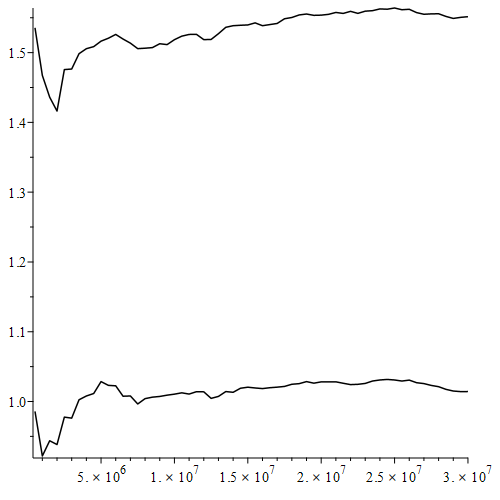Let $a_x$ be the number of primes $p<x$ starting a constellation $18,18,12$, i.e. $p,p+18,p+36,p+48$ are consecutive primes. Similarly, let $b_x$ and $c_x$ count primes starting a constellation $12,18,18$ and $18,12,18$ respectively. I think that there is strong reason to expect that as $x \rightarrow \infty$ we have $$ \frac{b_x}{a_x} \rightarrow 1$$ $$ \frac{c_x}{a_x} \rightarrow \frac32.$$
I will give my heuristic reasoning for expecting this and some limited computational support. Of course we don't know that the gap $12$ even occurs infinitely often.
Heuristic:
For $p,p+18,p+36,p+48$ to contain no multiples of $5$ requires $p \bmod 5 \in \{1,3\}$
For $p,p+12,p+30,p+48$ to contain no multiples of $5$ also requires $p \bmod 5 \in \{1,3\}$
For $p,p+18,p+30,p+48$ to contain no multiples of $5$ requires $p \bmod 5 \in \{1,3,4\}$
The added condition that the four primes be consecutive seems to be equally restrictive in all three cases.
Computation: Here is a graph,
The top curve is $$\frac{c'_x}{a'_x}$$ and the one below is $$\frac{b'_x}{a'_x}$$ up to $x=3\cdot 10^7$ where $a'_x$ is the number of primes $p<x$ so that $p,p+18,p+36,p+48$ are all primes (but not required to be consecutive.)
Each curve actually has $60$ data points, those for $x$ a multiple of $500,000.$

